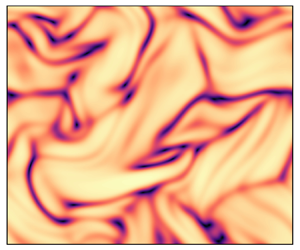No CrossRef data available.
Article contents
Variational bounds and nonlinear stability of an active nematic suspension
Published online by Cambridge University Press: 30 May 2024
Abstract

We use the entropy method to analyse the nonlinear dynamics and stability of a continuum kinetic model of an active nematic suspension. From the time evolution of the relative entropy, an energy-like quantity in the kinetic model, we derive a variational bound on relative entropy fluctuations that can be expressed in terms of orientational order parameters. From this bound we show isotropic suspensions are nonlinearly stable for sufficiently low activity, and derive upper bounds on spatiotemporal averages in the unstable regime that are consistent with fully nonlinear simulations. This work highlights the self-organising role of activity in particle suspensions, and places limits on how organised such systems can be.
- Type
- JFM Papers
- Information
- Copyright
- © The Author(s), 2024. Published by Cambridge University Press



